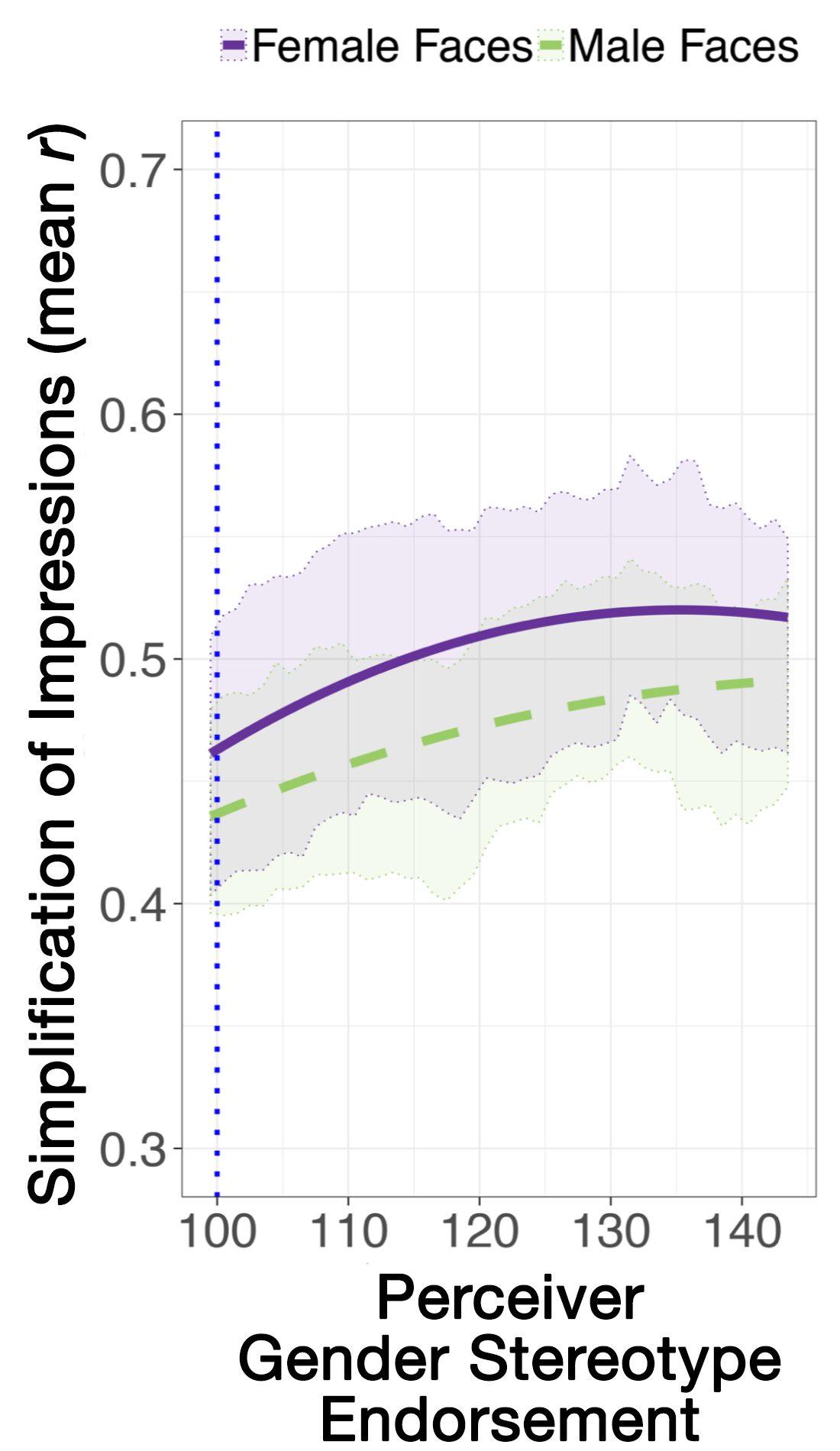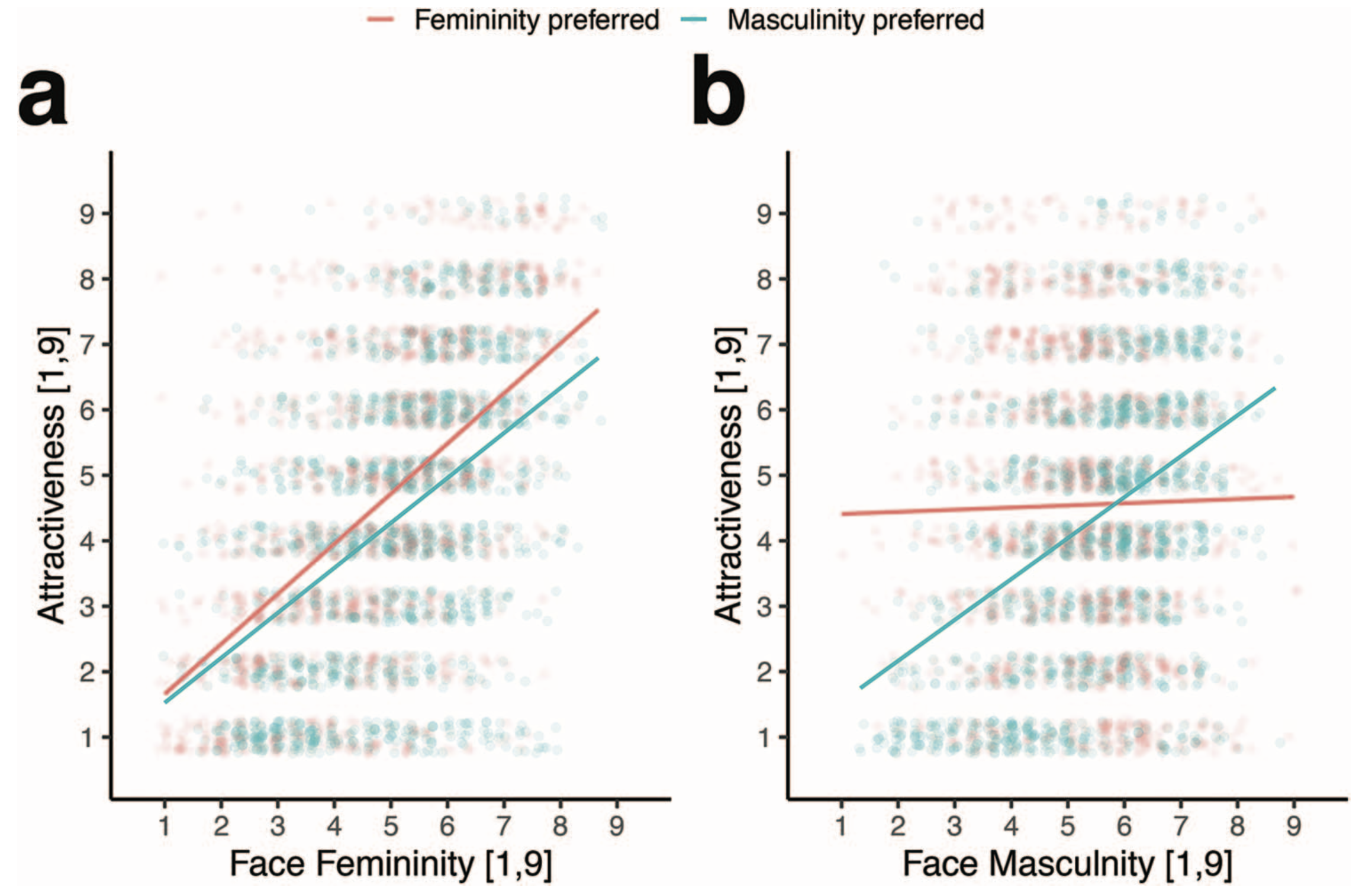Research Line 2:
Variabilities in Social Perceptions
Regional and individual differences steer the course of social perceptions. Both individual and cultural variability play fundamental roles in the process of social perception––not because they can explain an additional variance in the phenomenon, but because they act as a crucial lens through which we can scrutinize overarching theories.
One notable finding elucidates how regional personality trait associations impact the interpretation of facial cues concerning these traits (Oh et al., 2022 Psychol Sci). For example, in Region A, if adventurous people tend to also be warm, residents use this trait association when forming face-based impressions of strangers. In contrast, if Region B has no such link between adventurousness and warmth in its residents’ actual personalities, its residents won't use this pairing in their facial impressions. This relationship between actual personality and facial impression is mediated by regional beliefs about traits. This finding underscores the importance of regional variability: Even though areas have distinctive patterns of impression formation, all derive their social judgments from their local contexts, highlighting this universal principle of regional learning in social perception processes.
Another finding that highlights the importance in building a general theory is the compression in female face impressions. For example, if you are a person who strongly believes that ‘women are on average emotional and nurturing than men are’, you are more likely to form a more compressed impressions of both women and men than those who hold weaker gender stereotypes. Compression here means that people often rely heavily on one or two apparent traits to make broader assumptions about a woman's character, reflecting stronger preconceptions. Indeed, individuals who strongly endorse stereotypes tend to have more pronounced biases in their judgments (Oh et al., 2019 J Exp Psychol: Gen). This observation of individual differences suggests stereotypes are indeed behind the phenomenon of impression compression.
One notable finding elucidates how regional personality trait associations impact the interpretation of facial cues concerning these traits (Oh et al., 2022 Psychol Sci). For example, in Region A, if adventurous people tend to also be warm, residents use this trait association when forming face-based impressions of strangers. In contrast, if Region B has no such link between adventurousness and warmth in its residents’ actual personalities, its residents won't use this pairing in their facial impressions. This relationship between actual personality and facial impression is mediated by regional beliefs about traits. This finding underscores the importance of regional variability: Even though areas have distinctive patterns of impression formation, all derive their social judgments from their local contexts, highlighting this universal principle of regional learning in social perception processes.
Another finding that highlights the importance in building a general theory is the compression in female face impressions. For example, if you are a person who strongly believes that ‘women are on average emotional and nurturing than men are’, you are more likely to form a more compressed impressions of both women and men than those who hold weaker gender stereotypes. Compression here means that people often rely heavily on one or two apparent traits to make broader assumptions about a woman's character, reflecting stronger preconceptions. Indeed, individuals who strongly endorse stereotypes tend to have more pronounced biases in their judgments (Oh et al., 2019 J Exp Psychol: Gen). This observation of individual differences suggests stereotypes are indeed behind the phenomenon of impression compression.

The level of impression simplification (how different individual impressions were differentiated, e.g., between ‘trustworthy’ impressions and ‘unhappy’ impressions, were predicted by participants’ level of gender stereotype endorsement. The more one endorsed the gender stereotypes (”women are on average more emotional than men are”), the more simplified their face-based impressions for others were. (from Oh et al. 2020 J Exp Psychol: Gen)
Another relevant finding is about personality and face preferences. In an industrialized society (like the US), women find male faces with feminine shape (e.g., bigger eyes, narrower chin) more attractive, compared to faces with masculine shapes. This may be because women’s prefer feminine (vs. masculine) personality in a partner: warmth, nurturingness, and gentleness (Oh et al., 2020 J Exp Psychol: Hum Percept Perform). Beyond this general principle (feminine personality preference → feminine face-shape preference), we found a finding specific to individual perceivers: Those who
preferred
feminine personality traits in a partner
preferred
feminine characteristics in male faces, whereas those who
preferred
masculine personality traits (even though they were in minority)
preferred
masculine characteristics in male faces. This finding explains the rich diversity in attractiveness perception and mating choice. At the same time, it highlights that we should consider conceptual factors when we think about interpersonal attraction, in addition to perceptual factors (e.g., facial symmetry).

Individual participants’ personality preferences predicted what type of facial judgments predicted their perceptions of attractiveness of faces. In other words, when a person prefers a specific trait such as dominance, faces that appear dominant are likely to appear attractive to them.
a: The positive effect of feminine trait judgments on attractiveness was stronger among those who preferred a feminine personality than among those who preferred a masculine personality, although the difference did not reach significance
b: The positive effect of masculine trait judgments on attractiveness was stronger among those who preferred a masculine personality than among those who preferred a feminine personality. (from Oh et al. 2020 J Exp Psychol Hum Percept Perform)
Togehter, these findings (regional variability in personality traits, individual perceiers’ gender stereotype levels, individual preferences in faces and personality traits) highlight that any robust theory of social perception (and broader experimental psychology) must produce hypotheses that account for and can be tested against these individual differences.